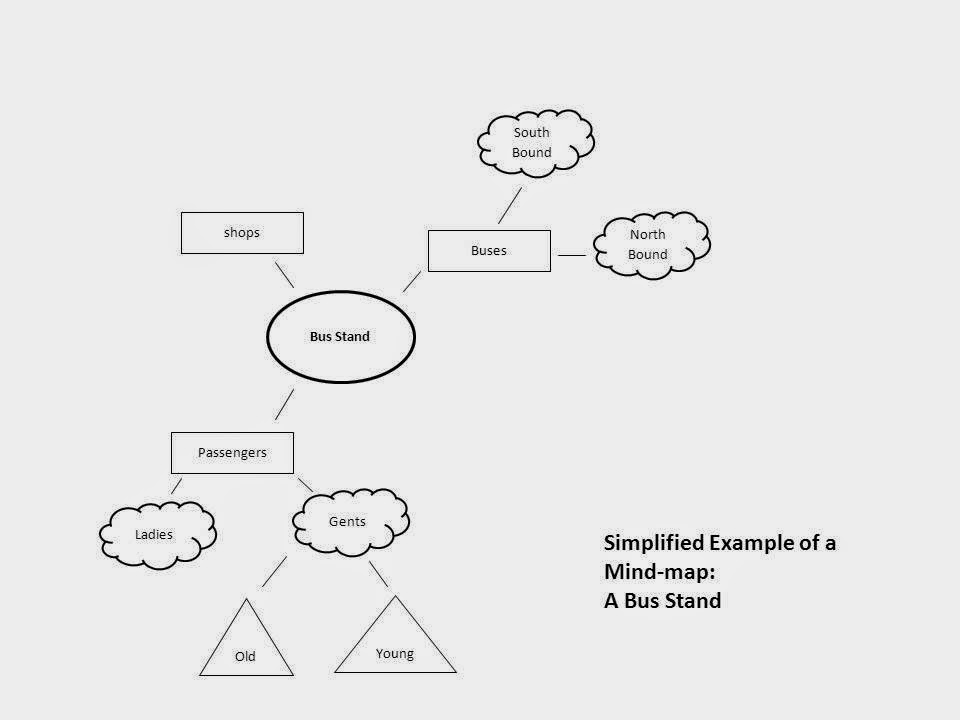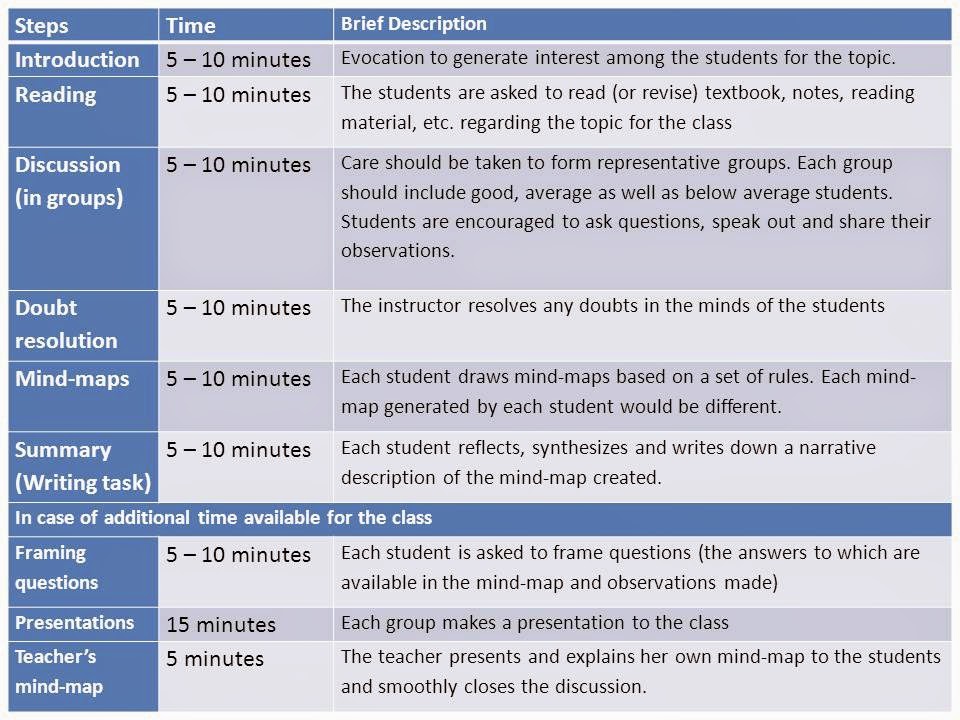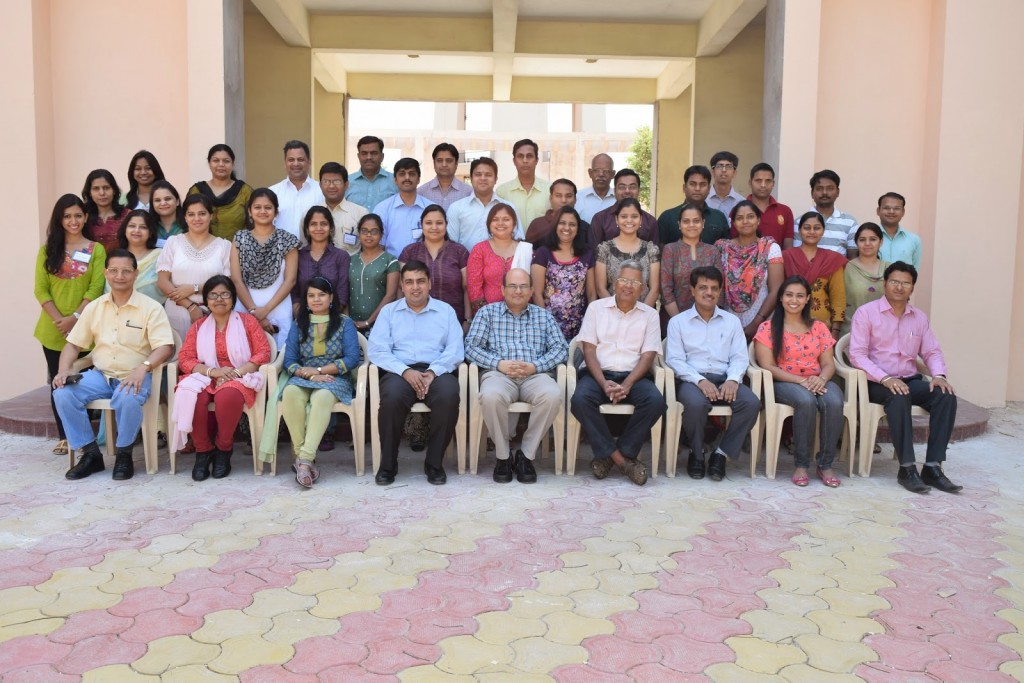This is the second part of Prof. DVR Seshadri's piece on innovation in teaching, and focuses on the Active Learning Methodology (ALM). The first part appeared last week.
Active Learning Methodology or ALM
ALM focuses on participative learning. In this method, participants discuss the class topic in groups and present their learnings to the class in the form of a chart or mind-map. The faculty/instructor plays the role of the facilitator and ensures that the learnings are consolidated and summarised.
In a typical class using ALM, participants are divided into groups of three to four each. Each group is asked to discuss the session topic within their respective groups. The step-by-step instructions by the faculty ensure that the discussions proceed sequentially. The following are the steps (instructions) by the faculty/instructor.
1. Members of the group list out their observations, and write them down in their notebooks. Each member of the group is asked to carry out the exercise individually.
2. Next, the group members are asked to discuss, share and compare their notes, and prepare a consolidated list of observations. The consolidated list would include all observations of the members in the group.
3. In the next step, each member of the group is asked to prepare mind-maps, or diagrammatic representation of their observations. The mind-map should make use of simple symbols such as ovals, rectangles, bubbles, triangles, etc., to present the observations of the participants. However in drawing the mind maps, the instructor gives certain rules as follows:
- The main theme should be at the centre of the diagram
- The sub-themes should be drawn in the periphery
- Levels of observations should be clearly distinguished.
(For instance, the oval shape may depict only level 1, rectangles could be used only for level 2, bubbles could be used to depict only level 3, and triangle could be used to depict level 4. Further the levels could be distinguished by thickness of the lines, different colours, etc.)
The diagram should consist of only key words. No sentences are allowed.
A simplified example of a mind-map is shown below, presenting the observations which could be drawn for a typical bus stand.
The main theme (Level 1 represented by Oval) is the bus stand. The sub theme at level 2 (represented by rectangles) includes shops, buses and passengers. The observations about the buses are further divided into north bound and south bound buses (level 3 represented by bubbles). The observations about the passengers are further divided into ladies and gents (level 3 represented by bubbles). Further observations about the gents passengers are subdivided as old or young passengers (level 4 represented by triangles).
1. In the last step of this exercise, each of the group members is asked to prepare a set of questions, for which the answers are available in the diagram, or the points consolidated by each group. The instructor encourages the students to prepare any number of questions that they could together come up with.
Each group is then asked to make a 2-minute presentation, about their observations to the entire class. Each subsequent group, making the presentation, can only add to the observations made by the previous group, and cannot repeat any of the points made by the earlier groups.
As a final step, any one group asks questions to any of the other groups. The questions are such that the answers are available in the mind-map as well as in the consolidated observations made by the groups.
The following section provides a summary of the structure of the pedagogy, and the sequence of the steps that can be followed, for a typical classroom session.
The ALM has been successfully implemented in more than 12,500 schools in the state of Tamilnadu, India. Initially developed by The Krishnamurthy Foundation of India and then implemented on a very large scale in schools in Tamil Nadu by Shri M.P. VijayaKumar IAS (Retd.), ALM has met with widespread acclaim and success. Mr. Vijaykumar is now engaged in promoting the ALM for undergraduate engineering courses in India.
Over the last two years, I have adapted this methodology in management education, using it in my MBA classes as well as in executive education programs. This methodology has been received with great enthusiasm by participants. They provided overwhelmingly positive feedback on the methodology and went on to suggest that all the sessions henceforth should be conducted using this method. I have shared this experience with several of my faculty colleagues at IIM Bangalore, who evinced keen interest in it. Some of them have started to use it in their executive education program teaching.
Alternative teaching methodologies
The above discussion throws some light on the fact that teaching has to be necessarily a participative process for it to be accepted as a learning tool by the students. That teaching needs to be reinvented has gained wide acceptance among teachers around the world. In many business schools in USA and elsewhere, there is growing focus on alternative teaching approaches that engage students fully in the learning process. The ‘Flipped Model’, which is a variant of ALM has gained considerable traction in US business schools.
Reinventing teaching through innovation has become an urgent need in case of both executive education and long duration programs such as MBA and executive MBA since participants often come with considerable work experience, and consequently do not have the attention span or the inclination to sit through long lectures and other faculty-centric sessions.
Primarily, ALM focuses on addressing the question, “How do students learn?”, “What do students expect from an educational institute?”, “What do teachers want students to be?”, etc. ALM focuses on several objectives that teachers using this methodology seek to achieve. These include:
1. The students should think and act independently.
2. The students should be able to solve problems creatively and flexibly.
3. There should be democracy in the classroom: Students should appreciate that they should wait for their opportunity to voice their views.
4. Through small group discussions that precede sharing within the larger group, a lot of refinement of ideas takes place, thus greatly enhancing the learning for everyone.
5. In a typical teacher-centric model, there are bright students who learn, while a significant chunk of the class is left out and over a period of time, this group becomes disinterested in the subject. In ALM, the endeavour is to get every student upto speed and invite every student to be part of the learning process.
ALM enables participants to develop ‘Higher Order Thinking Skills’ (HOTS). These include developing deep understanding, analysis, synthesis and judgement. ALM promotes Higher Order Thinking Skills.
Higher Order Thinking Skills (HOTS)
(Source: “Higher Order Thinking Skills”, by F.J. King, Ludwika Goodson, and Faranak Rohani, Educational Services Program, (Centre for Advancement of Learning and Assessment), www.cala.fsu.edu)
According to these researchers, “Higher order thinking skills include critical, logical, reflective, meta-cognitive and creative thinking. They are activated when individuals encounter unfamiliar problems, uncertainties, questions, or dilemmas. Successful application of the skills result in explanations, decisions, performances, and products that are valid within the context of available knowledge and experience and that promote continued growth in these and other intellectual skills. Higher order thinking skills are grounded in lower order skills such as simple application and analysis, and cognitive strategies and are linked to prior knowledge of subject matter content.”
Appropriate teaching strategies and learning environments facilitate the growth of higher order thinking skills. In addition, student persistence, self-monitoring, and open-minded, flexible attitudes are vital ingredients to develop higher order thinking skills. Although different researchers use different frameworks to describe higher order thinking skills and how they are acquired, all frameworks are in general agreement with regard to the conditions under which these skills develop in students.
Summary
In my 15 years of experience as a teacher, I have been fortunate to have intelligent and talented students. I have greatly gained from my interactions with them. This has only been possible because of my approach to teaching as a fun activity, where I constantly ask myself one question: ‘How can I maximize the learning for the students and make the course a truly transformational experience, while being fun-filled.’ One of the first instructions I give to my participants is “Sit back and enjoy, let’s have fun, and learn in the process as well”. This approach as forced me to constantly innovate in the teaching methodology, and I am now convinced that ALM is the direction to take.
Teaching methodologies across the country are in need of massive overhaul. Given that students these days have access to lot more information than in the generation gone by, communicate extensively with each other, etc., the tried and tested teacher-centric methodologies are now well beyond their sell date. However, the task of innovating teaching is an arduous one. It becomes even more difficult with rigid, archaic teaching pedagogies and stifling syllabuses that characterize most universities, which are followed more as a ritual, rather than with the objective of maximizing learning. Over the centuries, India as a centre of learning has always demonstrated vibrancy. It is time that the teaching fraternity continues to innovate on learning pedagogies to ensure that the intellect of the students is harnessed to the hilt to create truly world-class learning institutions. Incidentally such transformation is necessary if we are to move towards the vision painted by our new Prime Minister Shri Narendra Modi, best captured by his three S’s: ‘Skill, Speed and Scale.’
[My thanks to DVR for sharing this valuable perspective with us.]
Rishikesha Krishnan
(The author is the Director of IIM Indore. Previously, he was the Professor of Corporate Strategy at IIM Bangalore. He received the Thinkers50 innovation award last year. He is the writer of ‘From Jugaad to Systematic Innovation: The Challenge for India‘ and co-author of ‘8 Steps to Innovation‘. He blogs on http://jugaadtoinnovation.



